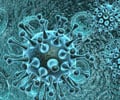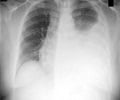A promising live vaccine against tuberculosis has begun safety testing on volunteers in the first phase of clinical trials in Neuss, Germany.
The vaccine called 'VPM1002' has proved to be extremely effective and safe in animal models thus far."This good protection now has to be proven in humans for the vaccine to be ready for the final approval," says the Chief Executive Officer of Vakzine Projekt Management GmbH (VPM), Bernd Eisele.
The vaccine is based on a highly safe vaccine that was introduced in 1921, but has been genetically developed to an extent where it is significantly more effective at preventing infection with tuberculosis bacteria than its predecessor.
"The new vaccine is based on the most administered live-vaccine worldwide: Bacille Calmette-Guérin (BCG). However, BCG often fails to display effects anymore. We wanted to sharpen the blunted weapon that is BCG once again," said Stefan H.E. Kaufmann, Founding Director of the Department of Immunology of the Max Planck.
As to how that fate was achieved, Leander Grode, Project Manager at VPM, said: "The weakened vaccine was genetically modified in such a way to ensure that it is no longer able to hide from the human immune system and even stimulates the body's own defences now."
For that a gene of a different bacterium, Listeria, was inserted into the vaccine, added the researcher.
Advertisement
Source-ANI
SPH















